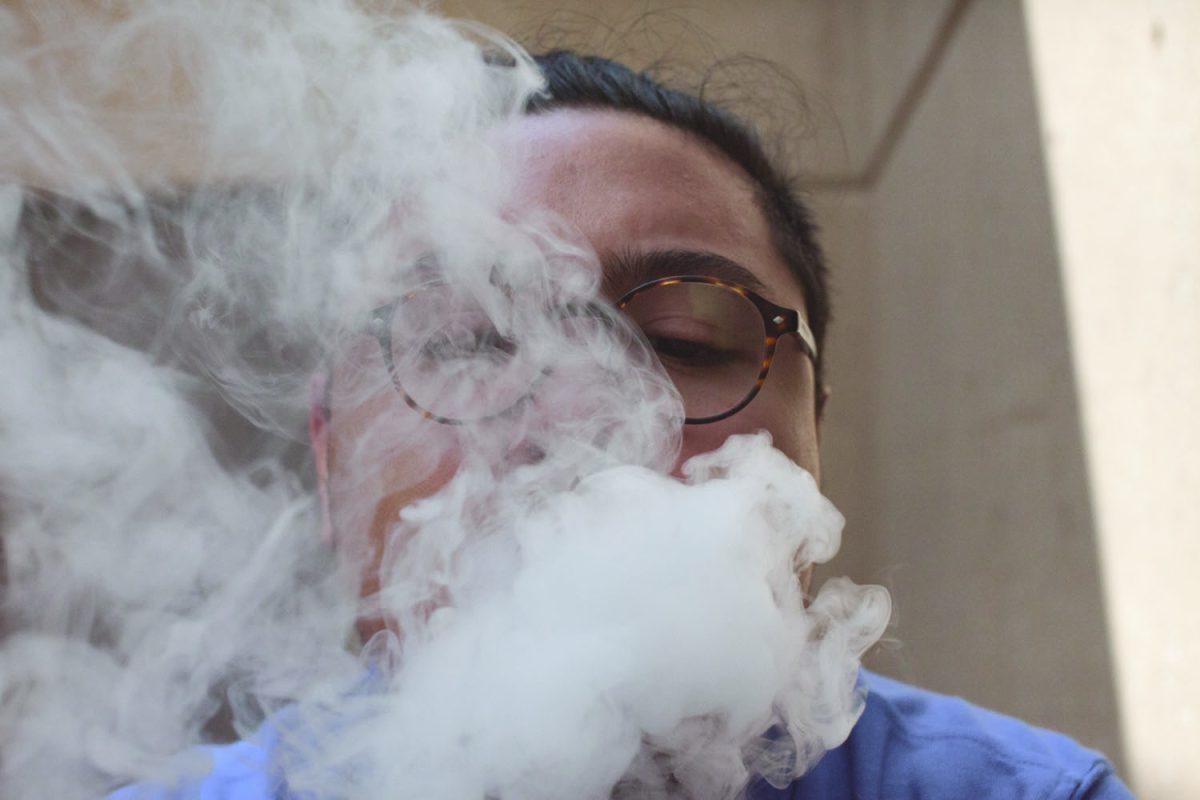Confusion on campus as rules regarding tobacco usage unclear, students divided on feelings about smoke indoors
E-cigarettes are currently classified in the same category as traditional cigarettes and other tobacco products at UTD.
Although using tobacco products is not allowed inside campus buildings, some students use their e-cigarettes indoors and in class.
Student Government Vice President Nancy Fairbank said SG has brought up the need for increased signage around campus to clarify areas where the smoking of both traditional and electronic cigarettes is forbidden, particularly near the JSOM, the SU and the library entrances.
“A lot of people do not think that e-cigarettes are classified as cigarettes,” Fairbank said. “It says that in the handbook, but not a lot of students actually read the handbook, so we do want to have clear signage around campus.”
Several buildings on campus are sponsored by cancer research institutes including the American Cancer Society, the Cancer Prevention Research Institute of Texas and the National Cancer Insitute. This is part of the reason for the heavy ban on all tobacco products in or around buildings, Fairbank said.
According to UTDs Tobacco Free Policy, grant requirements mandated by the CPRIT in 2012 require recipients to adopt a tobacco-free workplace policy.
“While e-cigarettes might not have secondhand smoke and decrease that risk, they are still a tobacco product,” Fairbank said. “And therefore, if we’re getting funding from cancer research institutes, it makes sense to ban them in those buildings.”
Physics senior Ben Cashen said he sees people smoking e-cigs indoors frequently.
“I mean, I don’t have a problem with it, but I don’t know what the majority thinks,” Cashen said. “I imagine a lot of people don’t really appreciate it.”
There are students who have questioned the university’s classification of e-cigarettes as tobacco products because most nicotine vaporizers are tobacco free.
“I think it’s interesting that e-cigs are banned under the ‘tobacco-free buildings’ policy even though they don’t usually contain any tobacco products,” said management information systems junior and e-cig user Matthew Cocco.
Despite this, Fairbank said SG has received complaints for students smoking e-cigs indoors and causing distractions in the classroom.
“The smell is distracting sometimes, or when you’re too concerned with the tricks the person is doing with the smoke,” said electrical engineering sophomore Maria Vazquez. “But that’s just like with anything else, like somebody using their phone or their laptop.”
Computer engineering senior Grant Carr uses an e-cigarette in lieu of the traditional cigarettes he smoked for years.
“People are offended by the sight of smoke because of the past 20 years of anti-cigarette messages,” Carr said. “So, when people see smoke they immediately think of cancer, even though it’s only glycerine vapor and nothing is combusting.”
He said he doesn’t see an issue with students using e-cigs in the classroom as long as the student tries not to cause a distraction.
For the time being, however, it is unlikely that the policy will change.
“As a smoker, I can accept the fact that people around here don’t really enjoy second-hand smoke or second-hand vapor, and I respect their opinion,” Cashen said. “It just seems kind of silly to have a problem with people who don’t appreciate them being used inside.”











